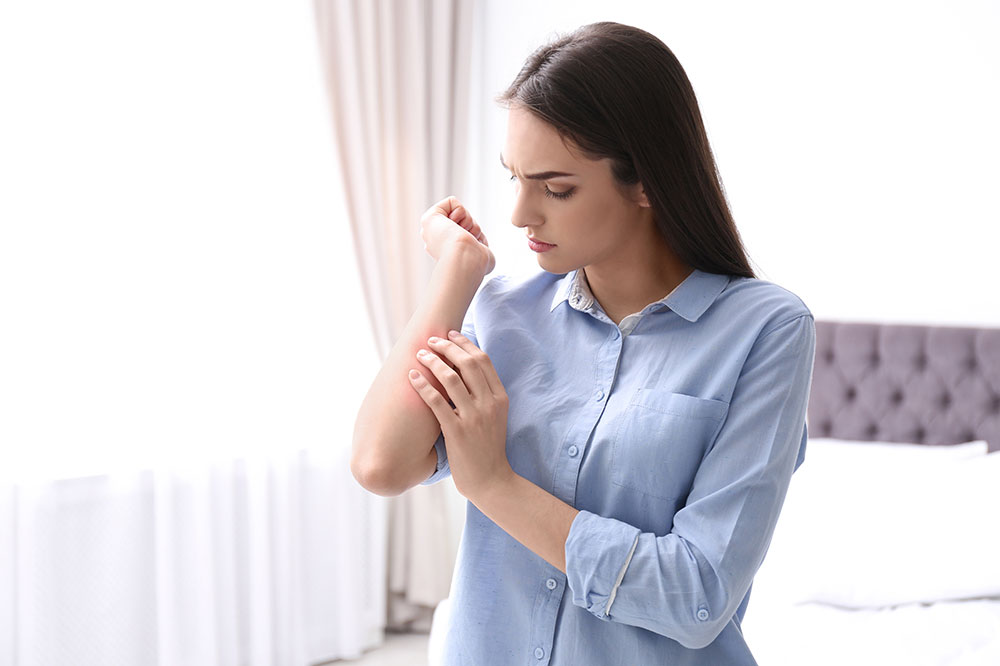
Understanding the causes, symptoms, and management options of plaque psoriasis
Plaque psoriasis is an autoimmune condition that leads to thick, itchy patches developing on the skin or the scalp. It is the most common form of psoriasis, as around 80–90% of the people affected by the condition are diagnosed with plaque psoriasis. Although the disease has no permanent cure, early diagnosis and treatment can reduce the severity of symptoms and help one manage the condition. Here is everything to know about the condition:
Understanding the condition
Also called psoriasis vulgaris, plaque psoriasis is a chronic autoimmune disease that causes skin cells to reproduce extremely quickly. It is a common type of psoriasis that results in thick patches or plaques on the skin and primarily affects the elbows, knees, scalp, and back. In severe cases, other body parts may also be affected, such as the face, hands, feet, and legs. This condition can affect anyone, but people who experience high levels of stress could be at a higher risk. Those with a family history of the condition are also more likely to develop the condition.
Causes
When affected by plaque psoriasis, skin cells begin to reproduce uncontrollably. In healthy bodies, new cells grow between 28 and 30 days. But with this disease, skin cells can emerge every three to four days and replace old cells quickly. The buildup of these new cells leads to the formation of plaques. There may be a genetic trigger as the condition can run in families, so parents may pass it on to their children. Some of the other psoriasis triggers could be sun damage, emotional stress, dry skin, skin injuries, certain foods and drinks, and a few prescription treatments.
Symptoms
Plaque psoriasis causes raised patches on the skin that can be itchy and painful. The disease may also result in nail psoriasis, which results in discoloration and separation of the nail from the nail bed. Some other symptoms of this skin disease are:
Cracks on the skin
Bleeding patches
Pain or irritation
Itchiness
Raised plaques with a white or silvery surface
Diagnosis
The condition is diagnosed by a healthcare provider after a thorough examination of the affected areas. The symptoms and family history may be analyzed and evaluated during the initial assessment. The doctor may also recommend certain diagnostic tests like a biopsy, allergy test, and blood test.
Treatment
Based on the diagnosis and the severity of the symptoms, the healthcare provider suggests specific treatments, including topical options like creams, gels, or lotions. In more severe cases of psoriasis, the healthcare provider may also recommend certain oral treatments or phototherapy. Phototherapy is the process of using ultraviolet light, specifically UVB, from unique lamps.
Patients are advised to consult their doctor if they notice new symptoms, no improvement in the symptoms after treatment, plaques that still look infected, or if there is persistent itching and swelling.
Food choices
Foods and drinks with anti-inflammatory properties help limit the flare-ups of plaque psoriasis symptoms. Foods with omega-3 fatty acids exhibit these properties to relieve inflammation. So, one should choose foods like olive oil, leafy greens such as kale and spinach, and fish such as salmon. Certain foods can worsen the condition by aggravating the symptoms. People with the skin condition should avoid eggs, dairy products like cow’s milk, red meat, gluten (which can trigger allergic reactions in those sensitive to gluten), citrus fruits such as lemons and oranges, and nightshade vegetables such as potatoes, peppers, and tomatoes. These foods contain chemical compounds that can trigger pain or worsen inflammation.
Natural remedies
The following at-home remedies can help relieve plaque psoriasis along with prescribed treatment options:
Mild soaps that have no dyes or perfumes should be used. One should also opt for fragrance-free products and those labeled “for sensitive skin.”
Avoid hot water baths and use lukewarm water instead. One should reduce the time spent in the shower to 15 minutes.
Wearing loose clothing helps the skin breathe.
Certain herbal therapies, such as aloe vera, can help reduce the symptoms.
Additionally, people with the condition should keep their skin moisturized and hydrated by using prescribed ointments or creams. Applying coconut oil may also help in making the skin smooth and hydrated.
One should strictly follow the treatment plan and make better food choices to help relieve plaque psoriasis symptoms. Before introducing drastic changes to one’s routine, a doctor or dermatologist should be consulted. They can help patients get a proper diagnosis and a suitable treatment plan based on the severity of the symptoms.




